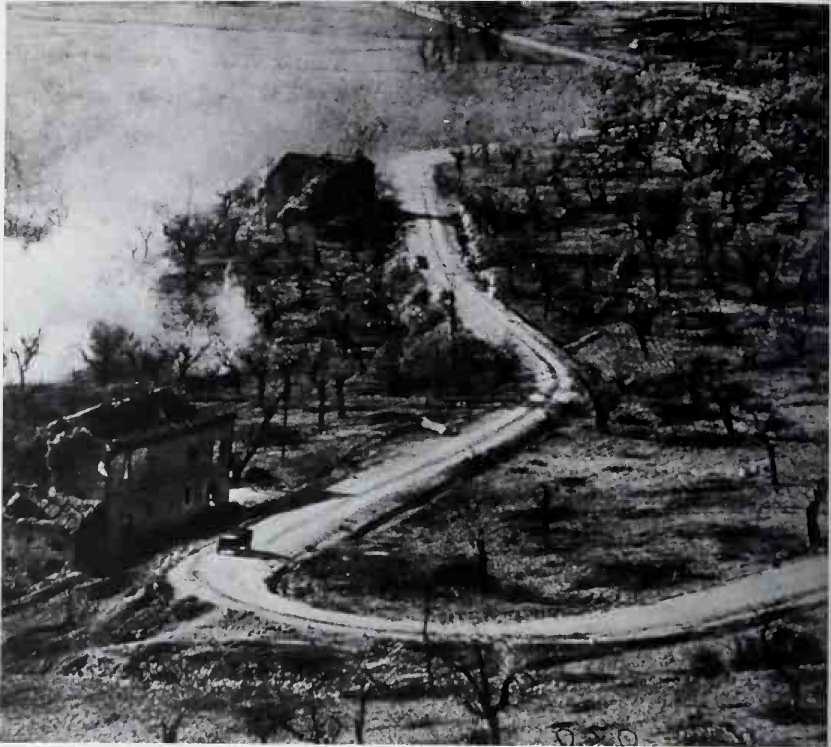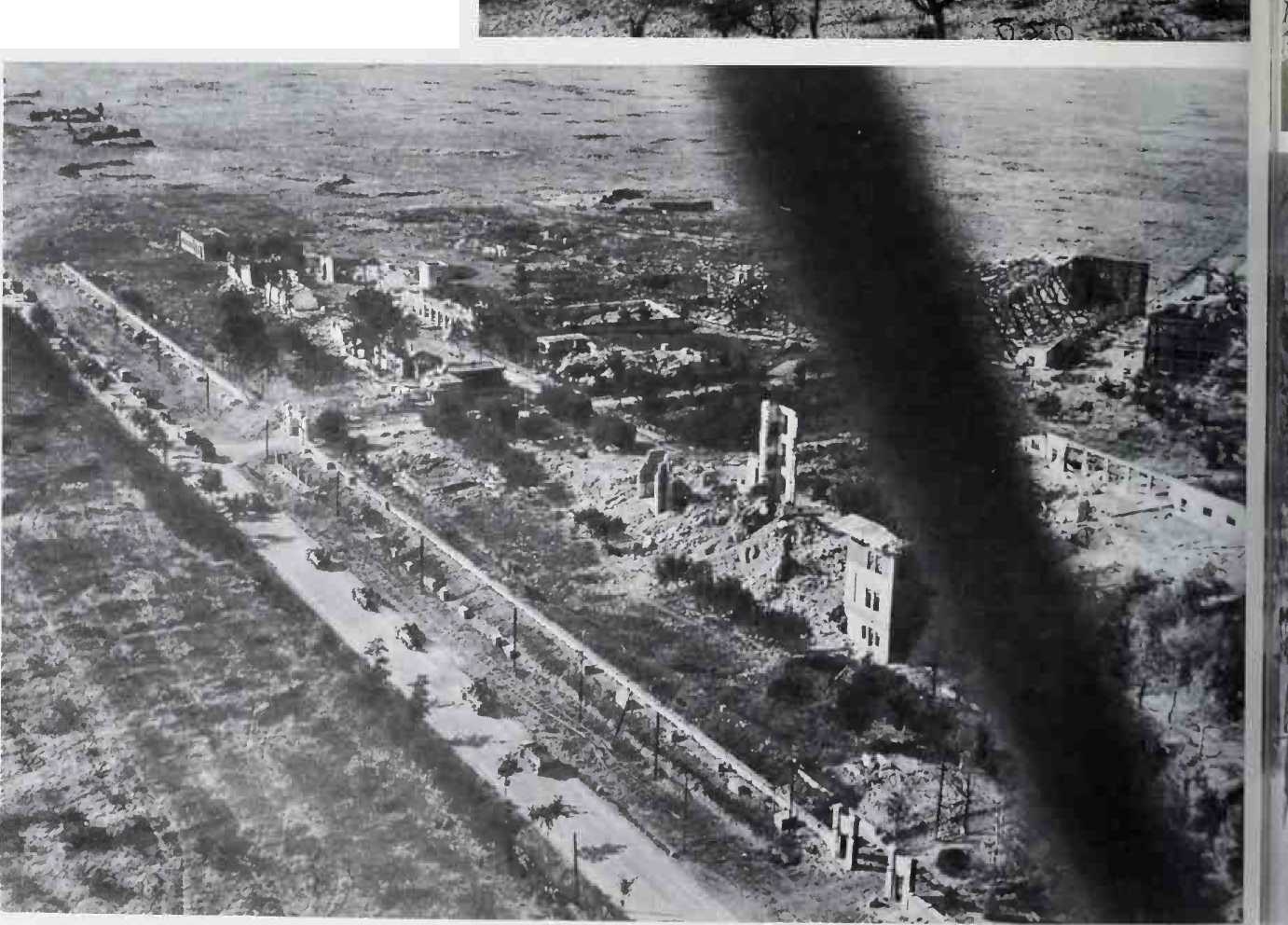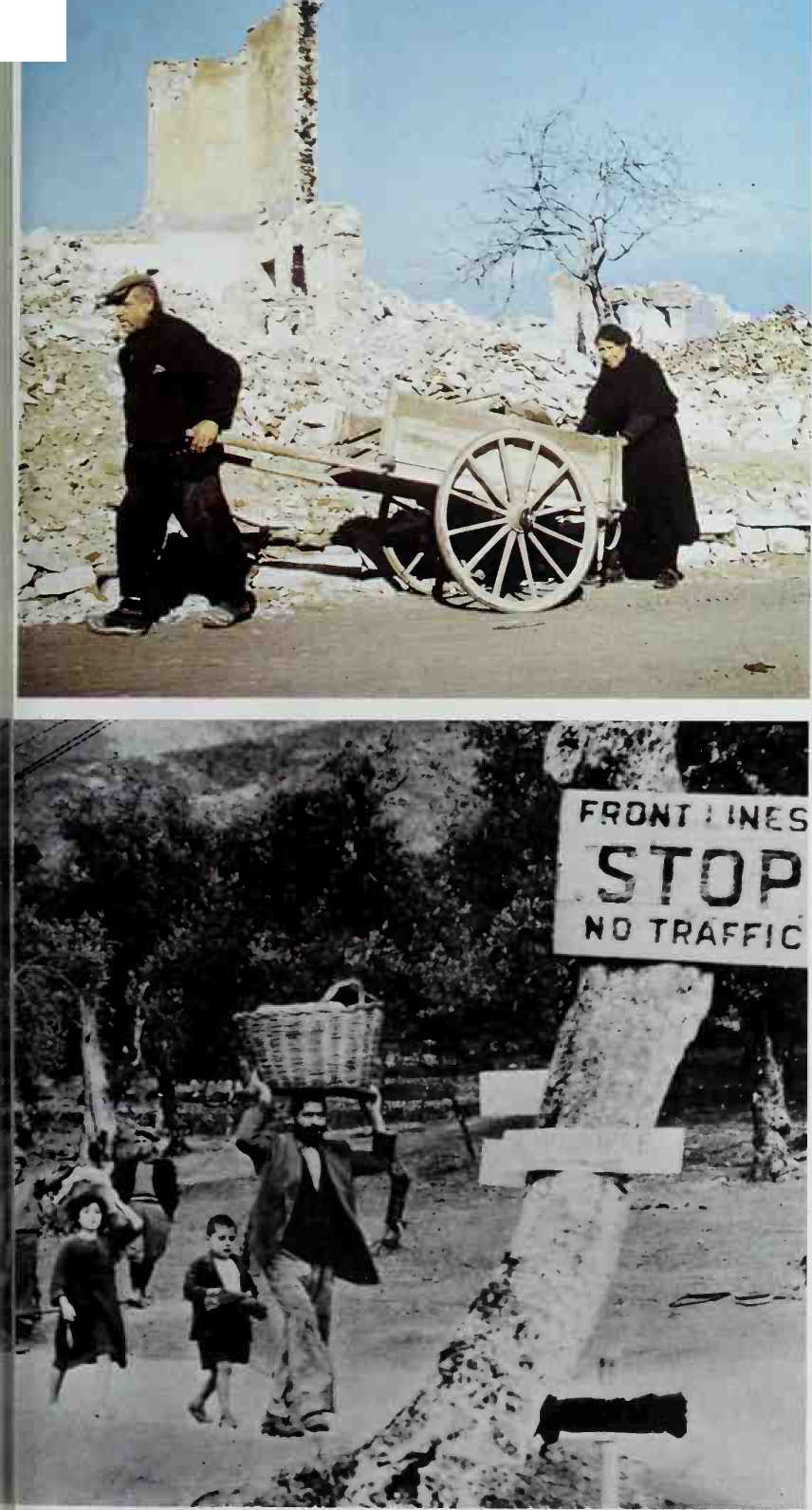What would have happened if at the same time the British 8th Army, in a sweep as wide as General Juin had wanted, had outflanked the Pontecorvo position? In all evidence XIV Panzer Corps would have faced total disaster, a disaster which would then have overtaken the 10th Army. It was only on May 17 that the Polish II Corps, now attacking again, found the monastery on Monte Cassino deserted. It was again only on May 19 that the British 78th Division (XIII Corps) attacked the "Senger defile” in the Aquino area, but unsuccessfully. This lack of liaison between the French and the British naturally held up the French Expeditionary Corps’ exploitation towards Pico and the Monti Ausoni.
Rut kesselring, throwing in everything he could lay hands on, sent units of the 90th Panzergrenadier, the 305th, and the 26th Panzer Divisions to stop them. He also sent the 29th Panzergrenadier Division against the American II Corps, which had advanced through Formia and Itri and by May 22 was threatening Terracina. This was trying to pay Paul by robbing Peter, that is to say Colonel-General von Mackensen. Reinforced to the equivalent of eight divisions by the transfer of the American 36th Division to the Anzio bridgehead, the American VI Corps had no particular difficulty in breaking the resistance of the German 14th Army during the day of May 23. Forty-eight hours later II and VI Corps met on the shores of Lake Fogliano. On the same May 23 the French Expeditionary Corps was spreading out over the Monti Ausoni whilst the Canadian I Corps (Lieutenant-General E. L. M. Burns; 1st Infantry and 5th Armoured Divisions), which had just relieved the British XIII Corps, was forcing its way through the Pontecorvo defile.







 World History
World History









